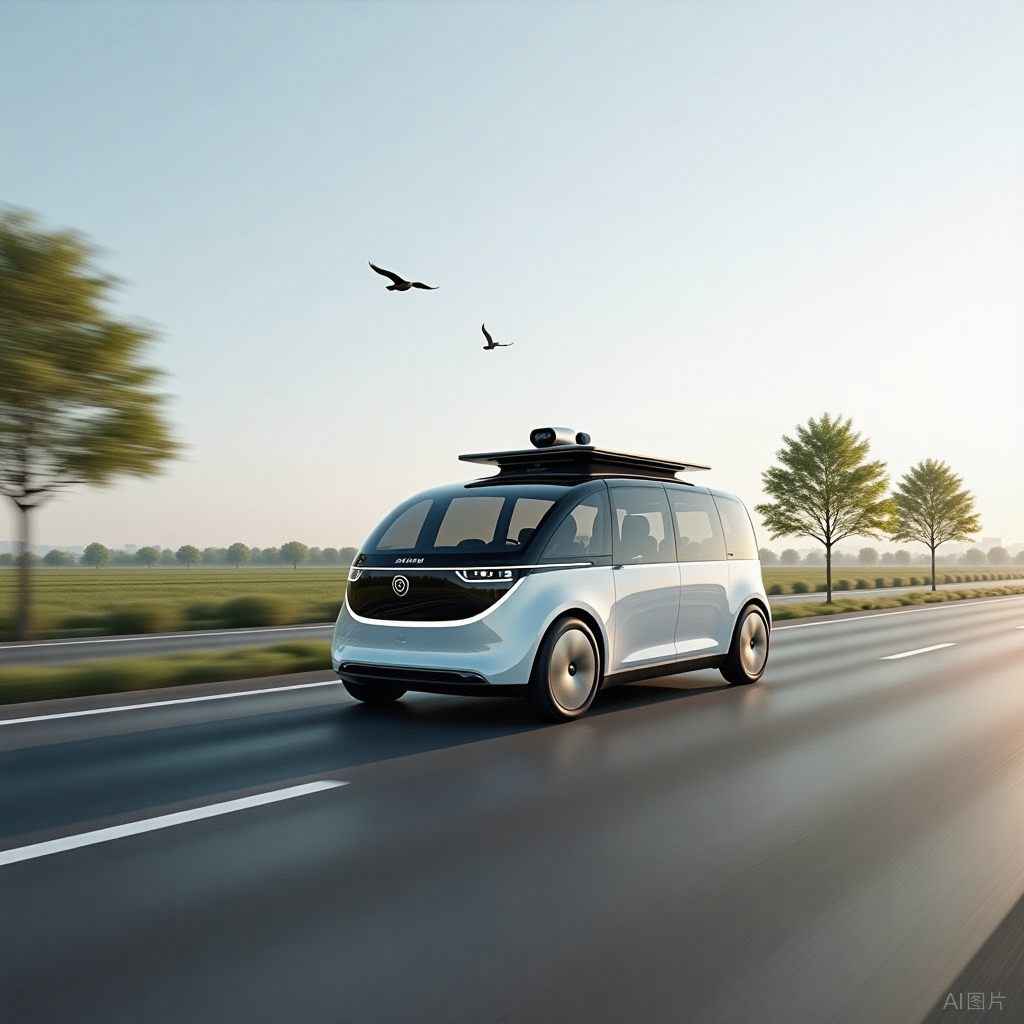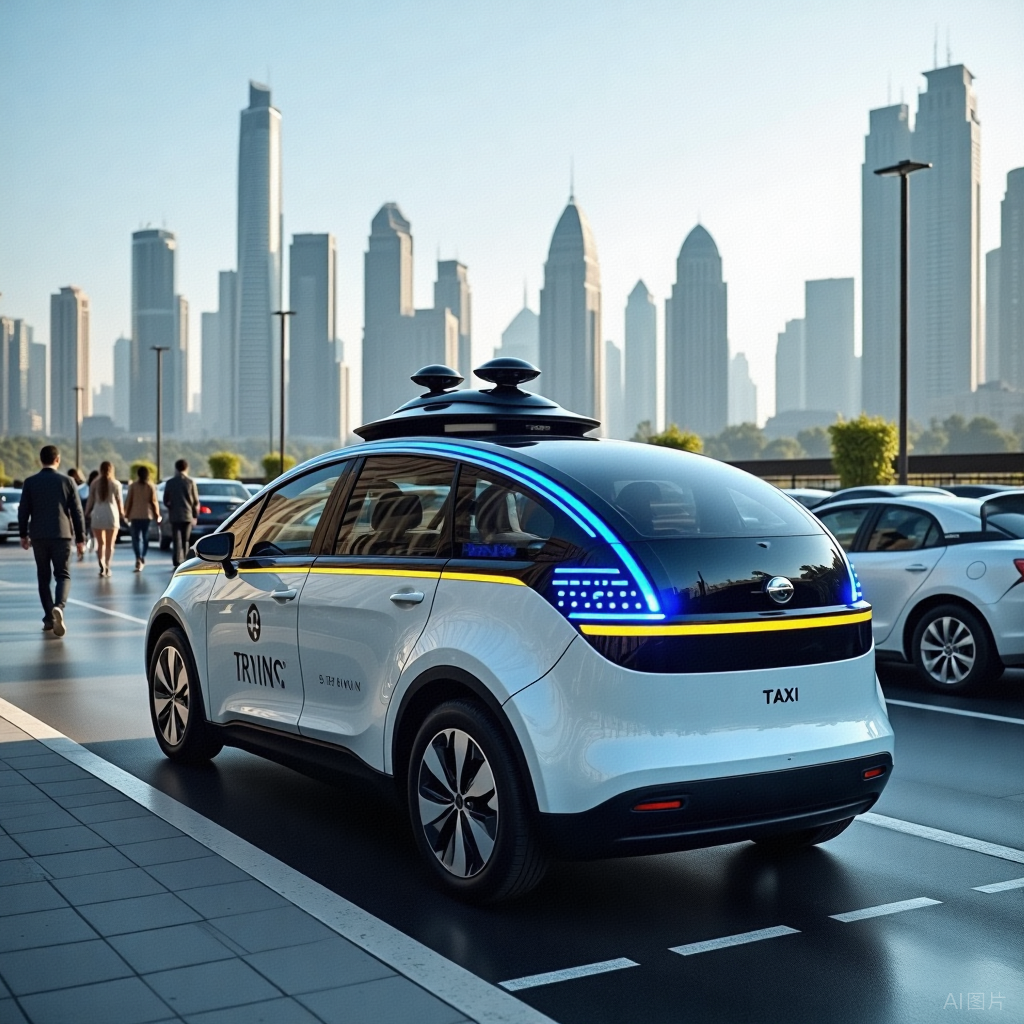Robotaxi: After 16 Years of Burning Money, How Close is the "Ultimate Dream" of Autonomous Driving Taxis?
![]() 05/19 2025
05/19 2025
![]() 644
644
Introduction
In 2009, Google clandestinely embarked on "Project Chauffeur," which later metamorphosed into Waymo.
Sixteen years later, this autonomous driving behemoth, backed by Google's parent company Alphabet, has squandered $35 billion yet failed to turn a profit with Robotaxi (autonomous driving taxi) services.
Paradoxically, despite the ubiquitous losses among Robotaxi enterprises, capital continues to pour in relentlessly.
Baidu Apollo has burned through $20 billion, Pony.ai incurs over $1 billion in annual losses, and even Musk has recently redirected funds from the affordable electric vehicle Model 2 to focus solely on Robotaxi.
Is this truly a technological revolution or merely a scheme orchestrated by Silicon Valley elites?
Today, Autonomous Vehicles (public account: Autonomous Vehicles) delves into the "three sins" of Robotaxi—why has it burned money for 16 years without achieving substantial progress?
(For reference, please click:
China's First Autonomous Vehicle: Thirty Years of Racing from the Laboratory to the Yangtze River)

I. Tesla Enters the Fray, Revitalizing Robotaxi
Recently, Tesla unveiled groundbreaking news: it will host a Robotaxi product launch event in Austin by June.
During the earnings call, CEO Musk unequivocally stated that the team is committed to ensuring the Robotaxi's timely debut at the June event.
According to the launch event, the initial Robotaxi service will adopt an invitation system, with the general public having to wait until late June or July for their experience; the initial fleet size is expected to be 10 to 20 vehicles, which will subsequently expand rapidly.
While the exact number of vehicles is still being discussed, Musk emphasized that the Model Y will be the first to achieve "unsupervised autonomous driving" in Austin.
However, Tesla has yet to announce crucial details such as service pricing and operating range.
Robotaxi is Musk's top priority project.
At an internal meeting in April, Musk decisively terminated the affordable electric vehicle project Model 2, betting Tesla's future on AI-driven projects like Robotaxi and humanoid robots.
Despite executives attempting to convince Musk with various models that "Robotaxi's profit prospects are worrisome," Musk simply replied, "Models don't comprehend Robotaxi at all," expressing full confidence in its future.
II. Robotaxi Business Model: Bridging the Gap from Experimentation to Commerce
The Robotaxi business model is straightforward, having undergone several iterations and now being well-defined.
Most surviving market players, such as Waymo, Luobo Kuaipao, Pony.ai, and WeRide, position themselves as "technology providers," focusing on offering autonomous driving software and hardware solutions for Robotaxi and assisting automakers with pre-installation or post-installation of software and hardware at the production stage.
Tasks like vehicle model development and operation are delegated to OEMs and more specialized ride-hailing platforms.
However, defining the business model is merely the first step. For Robotaxi to scale and become profitable, at least three significant challenges must be overcome.
1. Cost Reduction: The Achilles' Heel of Robotaxi
Currently, Robotaxi is costly, with high-level autonomous driving necessitating expensive LiDAR, high-definition cameras, radars, and powerful computing platforms.
It is reported that Waymo's modified driverless vehicle production cost ranges from $100,000 to $200,000, Baidu's sixth-generation Robotaxi hardware cost is around RMB 250,000, and though Pony.ai's newly launched seventh-generation autonomous driving system has seen a 70% cost reduction, industry forecasts still estimate its cost at approximately RMB 200,000.
Even for enterprises, cost reduction is challenging. The stringent safety requirements of autonomous driving compel automakers to increase sensor redundancy to handle various emergencies. Most models currently supporting city NOA without maps are equipped with only one LiDAR, whereas Pony.ai's latest Robotaxi boasts no fewer than seven.

Moreover, Robotaxi operators often need to own and maintain their vehicle fleet, bearing daily operation and maintenance costs like repairs, charging, and parking, further escalating costs and financial pressure.
2. Legislation: The Binding Constraint of Robotaxi
While cities like Shanghai, Guangzhou, Shenzhen, Chongqing, and Wuhan have issued policies granting enterprises testing permits or demonstration operation qualifications, a unified national legal and regulatory framework for autonomous driving remains elusive.
Details concerning liability determination, accident compensation, data security, etc., are ambiguous, and policy requirements vary across cities.
At the regulatory level, the United States also lacks a federal-level autonomous driving law, with policies differing from state to state. Some states (like Arizona) are welcoming and open, while others (like California) have stringent oversight and have even halted illegal operations.
3. Building Trust: The Psychological Barrier of Robotaxi
With L2-level driving assistance continually encountering skepticism, discussing public confidence in higher-level unmanned driving technology is challenging. Nonetheless, Chinese consumers generally exhibit higher curiosity and tolerance for autonomous driving technology. Surveys on smart cars reveal that 80.35% of Chinese respondents believe autonomous driving is safer than human driving, and over 86% anticipate autonomous driving technology to reach and surpass the skills of most drivers. In stark contrast, the public in countries like the United States is generally more cautious or even skeptical about Robotaxi. A 2023 poll by the American Automobile Association (AAA) revealed that 66% of Americans feel "fear" towards autonomous vehicles, with only 9% expressing "trust".
III. The Allure of Robotaxi: Seemingly Close, Yet Unattainable
Given its challenges, high costs, and lack of immediate returns, why do people persist and invest?
The appeal of Robotaxi or autonomous driving lies precisely here. It appears tantalizingly close, yet its true realization necessitates continuous breakthroughs, negotiations, and even trial and error and compromise.
In 2020, industry insiders first rode a Robotaxi in Nansha, Guangzhou, and couldn't resist sending a WeChat message to a friend upon witnessing the steering wheel of the driver's seat automatically turn and change lanes without manual intervention: "Look, this is the future."

Indeed, the future of Robotaxi is replete with endless possibilities.
It not only frees the driver's hands but also allows those unable to drive to experience the joy of solo travel.
More crucially, the advent of Robotaxi will redefine human mobility.
However, the ideal is lofty, while the reality is humbling.
For Robotaxi to truly take off, it must overcome challenges in technology, cost, law, trust, and other aspects. This is not just the domain of automakers but the concern of society as a whole.
IV. The Future of Robotaxi: A Prolonged and Arduous Journey
What lies ahead for Robotaxi?
This question lacks a definitive answer. But one thing is certain: the commercialization of Robotaxi is not an overnight success.
From a technical perspective, autonomous driving technology still requires continuous advancements and improvements.
While many enterprises have achieved L4-level autonomous driving tests, resolving more safety issues in complex scenarios is essential for true commercial operations.
From a cost perspective, Robotaxi remains expensive.
To reduce costs, technological breakthroughs must be complemented by the concerted efforts of the entire industry chain.
For instance, sensor manufacturers can further lower prices, and automakers can optimize vehicle design to minimize sensor count.
From a legal perspective, a unified national legal and regulatory framework for autonomous driving is urgently needed.
Only by clarifying details regarding liability determination, accident compensation, data security, etc., can legal protection be afforded to Robotaxi's commercial operations.
From a trust perspective, public confidence in autonomous driving technology must be further bolstered.
This necessitates the collaborative efforts of automakers, governments, media, and other stakeholders.
For example, automakers can intensify technology promotion and user education, governments can enhance oversight and policy support, and the media can objectively report on the progress and challenges of autonomous driving technology.
In summary, Autonomous Vehicles (public account: Autonomous Vehicles) believes that:
Robotaxi, a commercial concept brimming with controversy and anticipation, seems tantalizingly close, yet its true realization demands continuous breakthroughs, negotiations, and even trial and error and compromise. In this journey, stakeholders like automakers, governments, and the public must remain rational and patient.
Robotaxi, proceed with caution!
Dear reader, what do you think?





